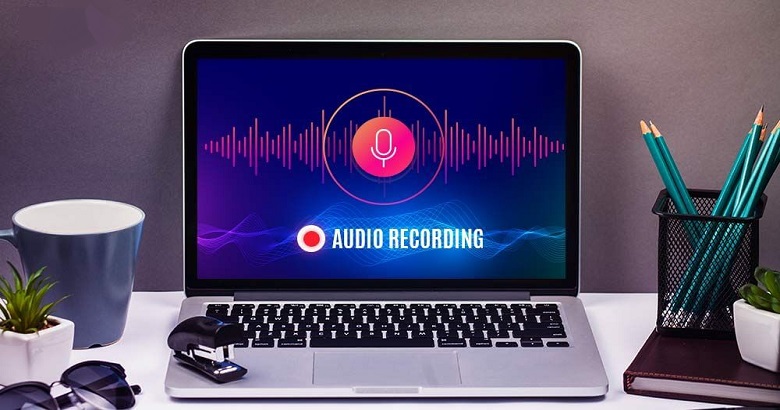Ever wondered what it takes to turn a written story into an audio masterpiece? Creating an audiobook is more than just reading aloud—it’s about capturing emotion, pacing, and atmosphere. Whether you’re an author narrating your own work or a skilled voice actor, producing an audiobook requires strategic planning and top-notch equipment. This guide will take you through the entire process, from choosing the right audiobook recorder tools to fine-tuning your final audio production.
The Importance of Audiobooks
Audiobooks have seen a surge in popularity due to their convenience. They allow listeners to enjoy books while multitasking—whether commuting, exercising, or relaxing at home. As a narrator, your job is to engage the audience, ensuring they are captivated by every word.
The Recording Process
The process involves several stages: preparation, recording, editing, and post-production. Each step requires attention to detail to ensure the final product is polished and professional.
Essential Tools for Recording
1. Microphone
Investing in a good microphone is crucial, as it directly affects the sound quality.
- USB Microphones: These are user-friendly and connect directly to your computer. They are perfect for beginners.
- XLR Microphones: These provide superior sound quality and are preferred in professional environments. They require an audio interface.
Recommendation: The Audio-Technica AT2020 is a versatile option that balances quality and price.
2. Audio Interface
If you choose an XLR microphone, an audio interface is necessary. It converts analog signals from the microphone into digital data.
Recommendation: The Focusrite Scarlett 2i2 is renowned for its reliability and sound quality.
3. Headphones
Closed-back headphones are essential for monitoring your recordings to prevent sound leakage and ensure accurate sound reproduction.
Recommendation: Sony MDR-7506 headphones are industry favorites for their clarity and comfort.
4. Recording Software (DAW)
A Digital Audio Workstation (DAW) is software used for recording and editing audio.
- Audacity: A free, open-source option great for beginners.
- Adobe Audition: A professional tool offering advanced features.
- Reaper: Affordable and packed with features.
5. Pop Filter
A pop filter reduces plosive sounds (like “p” and “b”) that can cause distortion in recordings.
6. Soundproofing Materials
Achieving a clean recording requires controlling the acoustics of your space. This can be done using:
- Foam Panels: Absorb sound and reduce echoes.
- DIY Solutions: Blankets, pillows, and carpets can also help minimize noise.
Preparing for the Recording
Script Preparation
- Read Aloud: Familiarize yourself with the text and identify areas that require emphasis or special pronunciation.
- Annotate: Mark up the script with notes on pauses, intonations, and difficult words.
Warm-Up Exercises
- Vocal Exercises: Engage in exercises that relax your vocal cords and improve enunciation.
- Breathing Techniques: Practice controlled breathing to maintain a steady voice throughout the recording.
Environment Setup
- Quiet Space: Choose a location with minimal background noise. A small, carpeted room with curtains can be ideal.
- Consistent Setup: Ensure that your microphone placement and room setup remain consistent to maintain sound quality.
Recording Techniques
Microphone Technique
- Distance and Position: Maintain a consistent distance (6-12 inches) from the microphone. Angle it slightly to avoid direct breath hits.
- Pop Filter Placement: Position it a few inches from the microphone to effectively reduce plosives.
Pacing and Tone
- Natural Flow: Aim for a conversational speed. Avoid rushing or dragging out words.
- Expressive Reading: Use tone variations to convey emotions and character dynamics.
Monitoring
- Real-Time Monitoring: Listen to your recording as you narrate to catch issues immediately.
- Adjustments: Make necessary adjustments to pacing and volume based on what you hear.
Editing and Post-Production
Editing Basics
- Cutting and Trimming: Remove mistakes, long pauses, and any extraneous noise.
- Noise Reduction: Use software tools to eliminate background noise and hums.
Adding Effects
- Compression: Apply compression to balance the dynamic range, ensuring all parts of the recording are audible.
- EQ (Equalization): Fine-tune the audio by adjusting frequency levels to enhance clarity and warmth.
Mastering
- Volume Consistency: Ensure the entire audiobook maintains a consistent volume, meeting industry standards.
- Final Review: Conduct a thorough review, listening for any remaining issues or inconsistencies.
Final Considerations
Quality Check
Before releasing your audiobook, perform a detailed quality check:
- Proof Listening: Have someone else listen to the recording to catch errors you might have missed.
- Multiple Devices: Test the audio on different devices (headphones, speakers, car audio) to ensure consistent quality.
File Formats and Distribution
- File Format: Save your audiobook in high-quality formats like WAV or FLAC for editing. Convert to MP3 or AAC for distribution.
- Platforms: Consider distributing through popular platforms like Audible, iTunes, or even your own website.
Marketing Your Audiobook
- Social Media: Share snippets, behind-the-scenes content, and interviews to engage your audience.
- Collaborations: Partner with influencers or podcasts relevant to your genre for expanded reach.
Final Thoughts
Recording an audiobook is both a technical and creative process. By investing in the right audiobook recorder tools and mastering essential techniques, you can produce a captivating audiobook that resonates with listeners. Practice and patience are crucial. Over time, you’ll refine your skills and develop a unique voice that brings stories to life. Happy recording!
Frequently Asked Questions
1. How can I improve my narration skills for audiobooks?
Improving narration skills involves practice and technique refinement. Start by reading aloud regularly to build confidence and fluency. Focus on pacing, articulation, and emotional expression. Recording yourself can be invaluable; listen back to identify areas for improvement. Consider taking voice coaching classes or workshops to learn professional techniques. Additionally, studying seasoned narrators can provide insights into effective storytelling methods.
2. What are some advanced editing techniques for audiobook production?
Advanced editing goes beyond basic cutting and noise reduction. Use EQ to balance frequencies, ensuring clarity and warmth. Compression helps maintain consistent volume levels while deusing controls harsh “s” sounds. Experiment with reverb to add depth, but use it sparingly. Mastering involves normalizing peak levels and ensuring the audio meets platform standards. Consider hiring a professional audio engineer if you’re unfamiliar with these processes.
3. How do I maintain vocal health during long recording sessions?
Maintaining vocal health is crucial for sustained performance. Stay hydrated by drinking plenty of water and avoid caffeine, which can dehydrate. Warm up your voice with exercises before each session. Take regular breaks to prevent strain, and use proper breathing techniques to support your voice. Avoid whispering, as it can be more taxing than speaking normally. If you experience discomfort, consult a vocal coach or healthcare professional.
4. What are the benefits of using an isolation booth for recording?
An isolation booth provides a controlled environment that reduces external noise and echoes, resulting in cleaner recordings. It allows for consistent sound quality across sessions and minimizes post-production corrections. While professional booths can be expensive, DIY options using blankets and foam panels can be effective. The booth’s effectiveness depends on proper setup and material quality, so investing in a good design pays off in the long run.
5. How should I handle character voices in a multi-character audiobook?
Handling character voices requires careful planning and consistency. Develop distinct voices for each character by experimenting with pitch, speed, and accents. Keep a reference recording for each character to maintain consistency throughout the book. Avoid over-exaggerating, as subtle differences often work best. Practice switching between voices to ensure smooth transitions. Consider the characters’ personalities and backgrounds to inform your voice choices, making them believable and engaging.




